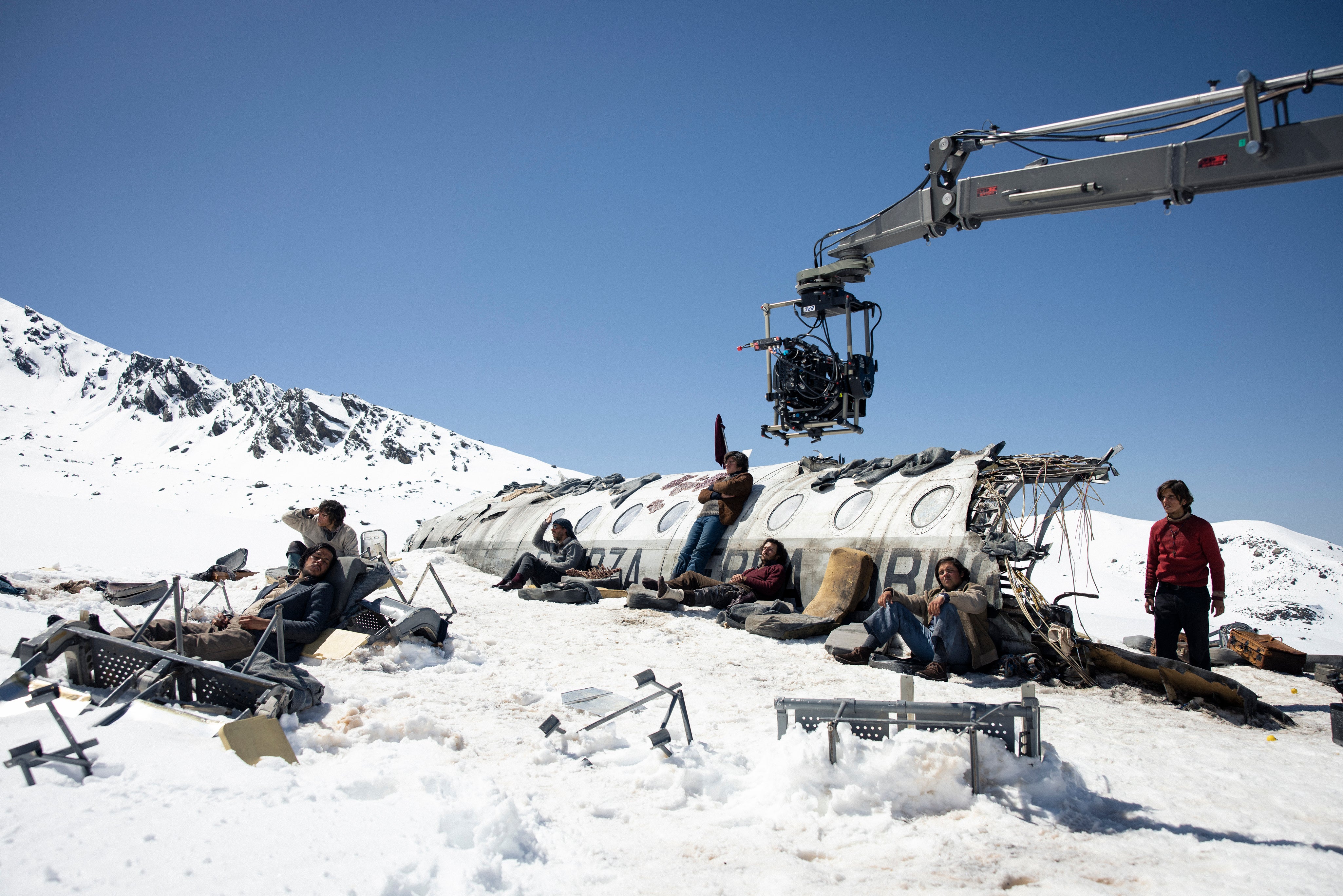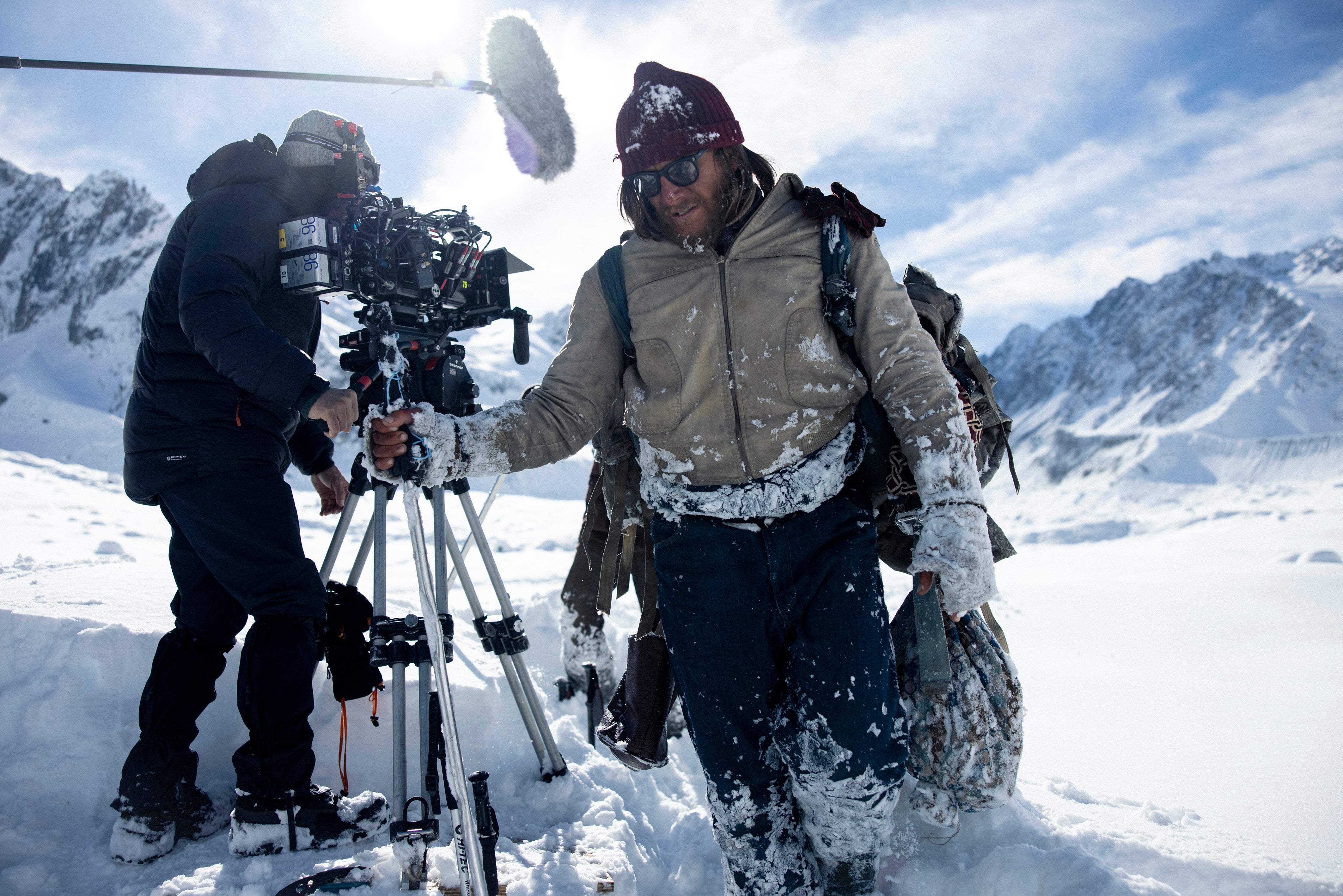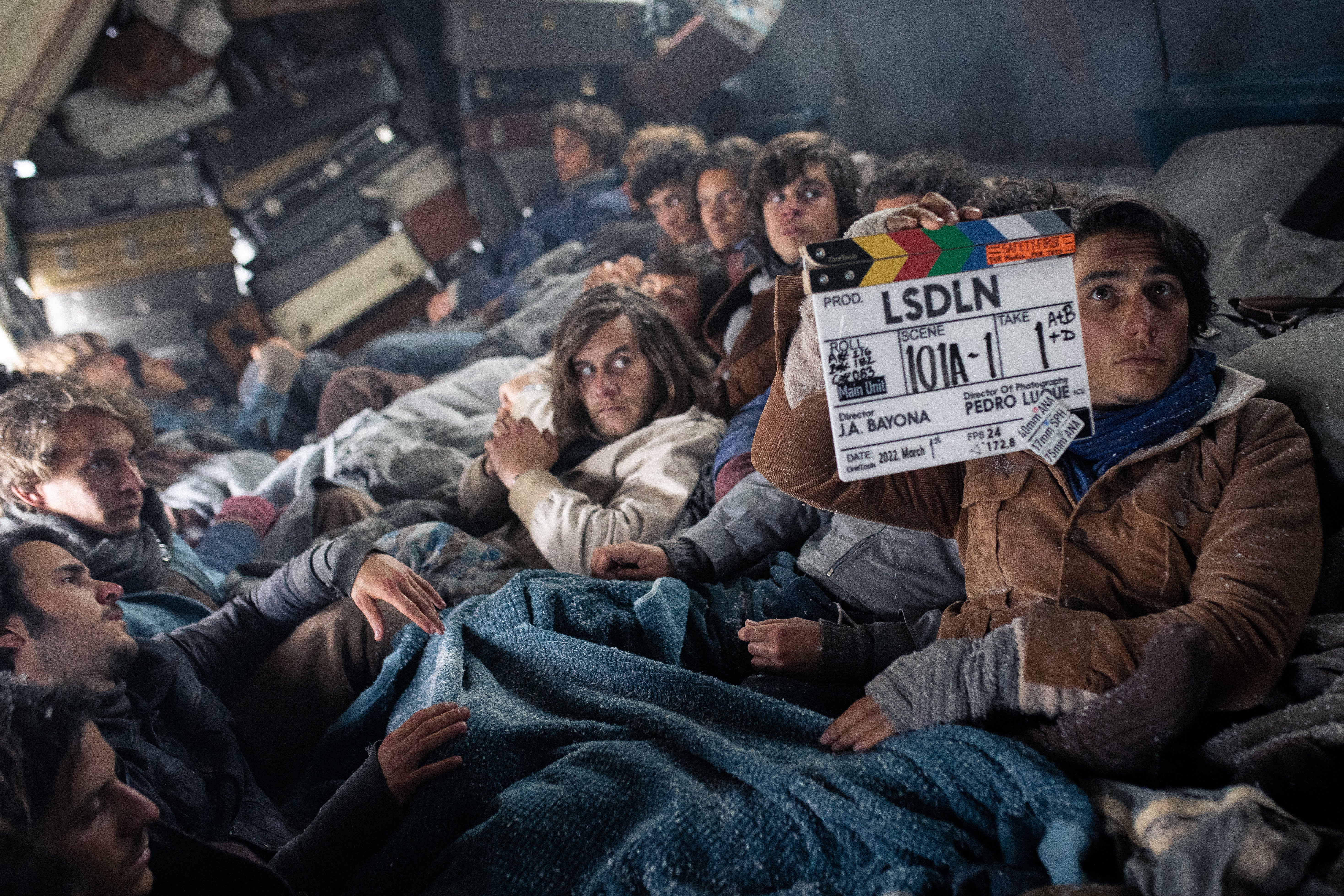How filmmakers brought the true story behind Society of the Snow to life
Discover the painstaking lengths director J.A. Bayona went to in creating this authentic telling of an incredible real life story of survival

On 13 October 1972, a flight with 45 people on board took off from Uruguay. The passengers were a rugby team, mostly in their late teens and early twenties, on their way to play a match in Chile. But the plane never made it there, instead crash landing in The Andes mountains. Those who survived found themselves stranded in one of the most inaccessible and inhospitable places imaginable.
What happened over the next 72 days is known as ‘The Miracle of the Andes’, and is one of the greatest survival stories of the last century. Now over 50 years on, a new film tells the remarkable story of the crash and what happened afterwards.
Shortlisted for Oscar Best International Feature Film, and longlisted for BAFTA Best Film not in the English Language, Society of the Snow is the result of a decade-long project by director J.A Bayona. The film is based on a 2008 book of the same name by Pablo Vierci, a journalist and friend of the survivors. While the story has inspired a film before – 1993’s Alive, starring Ethan Hawke – this is the first time it has been dramatised in the language of those involved, and in such realistic detail. It goes to great lengths to not only depict the truth of what happened in 1972, but to honour the experiences of those who survived – and the memory of the women and men who didn’t.
Extreme conditions

Bringing a harrowing true story to the screen is not fresh ground for Bayona, whose 2012 film The Impossible depicted the 2004 tsunami in Southeast Asia. But Society of the Snow brought with it a very specific set of challenges. “One of our main decisions was to go for authenticity and realism,” says Bayona. That meant, rather than using sets, shooting in difficult conditions high up in the Sierra Nevada mountains in Granada. They also filmed scenes in the Andes and Chile. “No member of the team had ever made a film before in such extreme circumstances,” says Bayona.
To prepare for filming and immerse himself in the story, the director visited the site of the crash in the Andes – where a memorial now stands. The filmmakers spent over 100 hours with the 15-remaining survivors, now all over 70, as well as the families of those who died. Ensuring they were fully onboard was vital, says Bayona. One of them, Carlitos Páez, plays his own father in the film.
Open auditions took place in Uruguay and Argentina to cast the film – with over 2000 people coming forward. Many of the film’s stars are newcomers, and Bayona encouraged them to improvise while filming. To reflect what the real men went through, they lost weight over the course of filming, supervised by doctors and nutritionists.
“The actors were brave and committed wholeheartedly to their performances, experiencing a small measure of the cold and hunger the survivors would have endured,” says Bayona. Painstaking detail also went into the film’s costumes, ensuring the colour palette and fabrics were authentic to the 1970s, and the wear and tear to their clothes over time was realistic.
A method approach

The cast rehearsed for two months together prior to filming. Bayona wanted them to form a bond similar to those stranded on the mountain. The film’s title is how the survivors referred to themselves up on the mountain, where survival relied on them working together as equals. If they stood any chance of leaving the mountain, no-one could be more important than anyone else.
One of the most haunting – and controversial – elements of the real-story is the unimaginable decisions the men had to make in order to survive, especially when it came to food. Bayona has already drawn praise for his sensitive handling of the issue, refusing to exploit it for drama but instead exploring the complexity of the situation and the different ways the men dealt with it. “We preferred to evoke emotions rather than show explicit images,” he says.
As well as portraying the most horrific situations the men experienced, reflecting the reality of those 72 days on the mountain also means showing the moments of absurdity and laughter that helped them to get through it. Even in the darkest of times, humans seek out levity and light.
Society of the Snow has already won prizes at the European Film Awards, and dominated nominations at Spain’s prestigious Goya Awards. It has been nominated for Best Non-English Language film at the 2024 Golden Globe awards, and is Spain’s official submission for Best Foreign Language film at the 2024 Oscars.
Perhaps the film’s biggest achievement though, will be the respect it pays to the lives of everyone who boarded Uruguayan Air Force Flight 571 that day.
Society of the Snow has been nominated for Film not in the English language in the 2024 BAFTAs. Watch Society of the Snow on Netflix now

